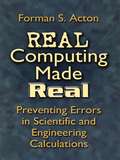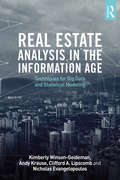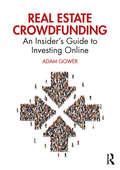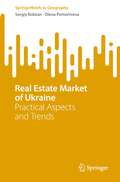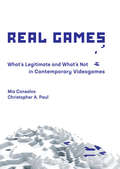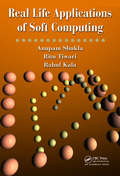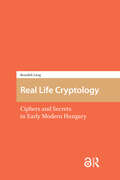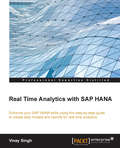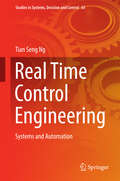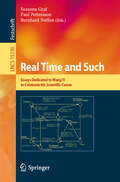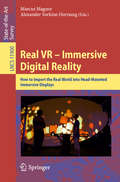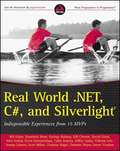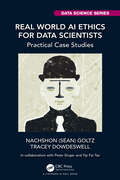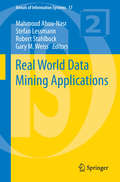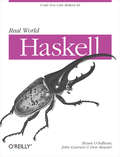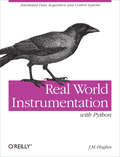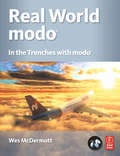- Table View
- List View
Ready to Wear
by Nancy Zhang Chloe TaylorA tween fashion designer's blog garners A-list attention in this chic start to a new middle grade series.Over the summer, fashion-loving Zoey Webber gets the best news ever: Her middle school is getting rid of uniforms! There's just one problem. Zoey has sketchbooks full of fashion designs, but nothing to wear! So with a little help from her best friends Kate and Priti, she learns to make her own clothes. She even begins to post her fashion design sketches online in a blog. That's how the Sew Zoey blog begins, and soon it becomes much more. Zoey's quirky style makes her a bit of a misfit at middle school, but her Sew Zoey blog quickly gains a dedicated following. Real fashion designers start to read it! Yet even as her blog takes off, Zoey still has to deal with homework, crushes, and P.E. class. And when the principal asks her to design a dress for the school's fashion-show fund-raiser, Zoey can't wait to start sewing! But what will happen when her two worlds collide?
Real Computing Made Real: Preventing Errors in Scientific and Engineering Calculations
by Forman S. ActonEngineers and scientists who want to avoid insidious errors in their computer-assisted calculations will welcome this concise guide to trouble-shooting. Real Computing Made Real offers practical advice on detecting and removing bugs. It also outlines techniques for preserving significant figures, avoiding extraneous solutions, and finding efficient iterative processes for solving nonlinear equations.Those who compute with real numbers (for example, floating-point numbers stored with limited precision) tend to develop techniques that increase the frequency of useful answers. But although there might be ample guidance for those addressing linear problems, little help awaits those negotiating the nonlinear world. This book, geared toward upper-level undergraduates and graduate students, helps rectify that imbalance. Its examples and exercises (with answers) help readers develop problem-formulating skills and assist them in avoiding the common pitfalls that software packages seldom detect. Some experience with standard numerical methods is assumed, but beginners will find this volume a highly practical introduction, particularly in its treatment of often-overlooked topics.
Real Estate Analysis in the Information Age: Techniques for Big Data and Statistical Modeling
by Clifford A. Lipscomb Kimberly Winson-Geideman Andy Krause Nick EvangelopoulosThe creation, accumulation, and use of copious amounts of data are driving rapid change across a wide variety of industries and academic disciplines. This ‘Big Data’ phenomenon is the result of recent developments in computational technology and improved data gathering techniques that have led to substantial innovation in the collection, storage, management, and analysis of data. Real Estate Analysis in the Information Age: Techniques for Big Data and Statistical Modeling focuses on the real estate discipline, guiding researchers and practitioners alike on the use of data-centric methods and analysis from applied and theoretical perspectives. In it, the authors detail the integration of Big Data into conventional real estate research and analysis. The book is process-oriented, not only describing Big Data and associated methods, but also showing the reader how to use these methods through case studies supported by supplemental online material. The running theme is the construction of efficient, transparent, and reproducible research through the systematic organization and application of data, both traditional and 'big'. The final chapters investigate legal issues, particularly related to those data that are publicly available, and conclude by speculating on the future of Big Data in real estate.
Real Estate Crowdfunding: An Insider’s Guide to Investing Online
by Adam GowerReal Estate Crowdfunding: An Insider’s Guide to Investing Online introduces the reader to basic real estate investment concepts and then takes a deep dive into how to invest passively yet wisely in real estate syndications. This book will teach the reader how to: • invest in crowdfunded real estate syndicates • understand key financial concepts used in the industry • diversify their investment portfolios • read between the lines of investment contracts • maximize profit while minimizing losses This book is a guide to the foundational financial concepts upon which all real estate projects are based and explains the language of real estate from an insider’s perspective. It provides a road map of what to watch for and how to win at the game of passive real estate investing.
Real Estate Market of Ukraine: Practical Aspects and Trends (SpringerBriefs in Geography)
by Sergiy Kobzan Olena PomortsevaThis book shows examples of basic approaches in real estate market analysis. Of value is the method of modeling the most attractive location of real estate, which is illustrated by a specific example. The authors give examples of real estate market research using GIS. The book analyzes the trends and prospects of real estate market development both in the pre-war and in the post-war period in Ukraine. It provides factors, trends, and development of the real estate market-directed investments. This book is useful to investors, real estate appraisers, real estate market researchers, GIS specialists, developers, researchers, graduate students, and students.
Real Games: What's Legitimate and What's Not in Contemporary Videogames (Playful Thinking)
by Mia Consalvo Christopher A. PaulHow we talk about games as real or not-real, and how that shapes what games are made and who is invited to play them.In videogame criticism, the worst insult might be “That's not a real game!” For example, “That's not a real game, it's on Facebook!” and “That's not a real game, it's a walking simulator!” But how do people judge what is a real game and what is not—what features establish a game's gameness? In this engaging book, Mia Consalvo and Christopher Paul examine the debates about the realness or not-realness of videogames and find that these discussions shape what games get made and who is invited to play them.Consalvo and Paul look at three main areas often viewed as determining a game's legitimacy: the game's pedigree (its developer), the content of the game itself, and the game's payment structure. They find, among other things, that even developers with a track record are viewed with suspicion if their games are on suspect platforms. They investigate game elements that are potentially troublesome for a game's gameness, including genres, visual aesthetics, platform, and perceived difficulty. And they explore payment models, particularly free-to-play—held by some to be a marker of illegitimacy. Finally, they examine the debate around such so-called walking simulators as Dear Esther and Gone Home. And finally, they consider what purpose is served by labeling certain games “real."
Real Life Applications of Soft Computing
by Anupam Shukla Ritu Tiwari Rahul KalaRapid advancements in the application of soft computing tools and techniques have proven valuable in the development of highly scalable systems and resulted in brilliant applications, including those in biometric identification, interactive voice response systems, and data mining. Although many resources on the subject adequately cover the theoreti
Real Life Cryptology: Ciphers and Secrets in Early Modern Hungary
by Benedek LángA large number of enciphered documents survived from early modern Hungary. This area was a particularly fertile territory where cryptographic methods proliferated, because a large portion of the population was living in the frontier zone, and participated (or was forced to participate) in the network of the information flow. A quantitative analysis of sixteenth-century to seventeenth-century Hungarian ciphers (300 cipher keys and 1, 600 partly or entirely enciphered letters) reveals that besides the dominance of diplomatic use of cryptography, there were many examples of 'private' applications too. This book reconstructs the main reasons and goals why historical actors chose to use ciphers in a diplomatic letter, a military order, a diary or a private letter, what they decided to encrypt, and how they perceived the dangers threatening their messages.
Real News: An Investigative Reporter Uncovers the Foundations of the Trump-Russia Conspiracy
by Scott StedmanDocumented Evidence of the Trump-Russia Conspiracy Investigative reporter Scott Stedman has made waves worldwide with his hard-hitting investigative journalism, going as far as anyone has to uncover the deep roots of the Trump-Russia Conspiracy. His research has been cited by the Washington Post, BBC, Reuters, CNN, McClatchy, the Daily Mail, the Guardian, and Vice, and has even helped guide Congress’s investigations.Real News collects, for the first time in print, Stedman’s eye-opening research into and evidence of every level of the Trump-Russia Conspiracy, from the 2016 Trump Tower Meetings to the dirty-money deal for Trump Tower Moscow, from the “coffee boy” George Papadopoulos and his mysterious wife to Russian infiltration of the National Rifle Association, from Cambridge Analytica’s sketchy business deals and influence operations to the battle for true journalism that will combat cries of “Fake News!” Full of real, exclusive evidence including ownership records, flight logs, banking information and statements, meeting transcripts, maps, quotes, stats and figures, cease and desist letters, and more, Real News not only enables readers to see and evaluate the arguments for the existence of the Trump-Russia Conspiracy for themselves, it also fully explains how Stedman went about his investigations to discover the truth. Anyone who is interested in the evidence—the real news about the Trump-Russia Conspiracy—needs to read this book.
Real Process Improvement Using the CMMI
by Michael WestReal Process Improvement Using the CMMI (R) presents readers with non-academic, real-world approaches to process improvement via CMMI. The author provides concepts and techniques for CMMI-based process improvement which are as effective as they are innovative. Professionals at all levels from system engineers to CEOs will find a wealth of practical guidance and new ways to look at model-based process improvement that have already benefited large and small organizations in a variety of environments. Using plain language and enlightening illustrations, the author identifies the most critical concepts of the CMMI, and explains how to turn those concepts into real process improvement. This book provides you with key information that will significantly benefit all CMMI process improvement efforts. Topics include: * Ways to discover and understand the business goals and drivers for successful process improvement initiatives * How to recognize the structures and practices many organizations already have in place that can accelerate process improvement, even before they begin using the CMMI * Planning and managing the process improvement project * Innovative, untraditional yet highly effective and proven strategies for CMMI-based process improvement * A thorough debunking of many of the costly and wasteful myths surrounding CMMI-based improvement.
Real Racing 3 Guida non Ufficiale
by Sonia Dal Cason The Yuw*GUIDA NON UFFICIALE* Guida di Suggerimenti Avanzati e Strategie. Questa è la guida più completa e dettagliata che troverai online. Disponibile al download immediato sullo Smartphone, su lettori eBook o in formato cartaceo. Dopo il successo delle mie centinaia di altre guide e delle strategie, ho scritto un'altra guida professionale avanzata per giocatori principianti e veterani che fornisce strategie specifiche e suggerimenti su come progredire nel gioco, battere gli avversari, avere più monete e valuta e molto altro! - Suggerimenti Professionali e Strategie. - Trucchi e Hack. - Segreti, Dritte, Trucchi,Sbloccabili e Inganni Usati dai Giocatori Pro! - Come avere Tonnellate di Contanti/Monete - E MOLTO ALTRO! Tutte le versioni di questa guida hanno degli screenshot per aiutarti a capire meglio il gioco. Non esiste nessun'altra guida completa e avanzata come questa. Dichiarazione di Responsabilità: Questo prodotto non è associato, affiliato, sostenuto, certificato o sponsorizzato dal Proprietario del Copyright Originale.
Real Retouching: The Professional Step-by-Step Guide
by Carrie BeeneFrom the perfect glossy pages of a magazine to the larger-than-life images floating on a billboard in the sky, image retouching has become a key component of today's digital photography world. So popular, in fact, that the sheer act of retouching has become its own verb as we often ask ourselves, "I wonder if this image was Photoshopped?" Sometimes controversial but widely accepted, and even expected, excellent retouching skills are crucial to finding success in the field of digital imaging. As you work through the clear step-by-step instructions in the book using the images provided on the bonus CD, you'll learn how to do real retouching jobs from start to finish, including each and every technical step along the way. You'll also get behind the scenes advice for talking to clients and establishing a workflow to ensure that your client gets the results they are looking for. If you're a student or aspiring professional just starting out in the world of retouching, the information found in this book can help you find work in the advertising/retouching industry. If you're already a working photographer, you'll be able to add retouching to your repertoire as an additional offering to your clients. Carrie Beene is a professional retoucher and educator who has worked with some of the world's most prestigious companies, including Revlon, MAC, and L'Oreal, and has contributed imagery to such renowned publications as the New York Times, Sports Illustrated, and Vanity Fair. In this excellent new book, she'll share the techniques she has learned and developed over the years to help you navigate the often mysterious world of image retouching.
Real Time Analytics with SAP HANA
by Vinay SinghEnhance your SAP HANA skills using this step-by-step guide to creating and reporting data models for real-time analyticsAbout This BookThis book will help you to process analytical and transactional data in real time with the help of SAP HANA.Walk through the steps of the data modeling process and build various data models and artifacts in SAP HANA Studio.Packed with rich examples and use cases that are closely focused on developing real-time applications.Who This Book Is ForIf you are a SAP HANA data modeler, developer, implementation/migration consultant, project manager, or architect who is responsible for implementing/migrating to SAP HANA, then this book is for you.What You Will LearnGet to grips with the basic building blocks of Analytics/Data models in the SAP HANA environment.Discover various schemas, modeling principles, Joins, and the architecture of the SAP HANA engine.Build data models and artifacts in Sap HANA Studio.Design decision tables and understand the concept of transport management in the SAP HANA landscape.Work with the different views in SAP HANA Studio.Explore full-text search and fuzzy search in SAP HANA.Create your own scenarios and use cases using sample data and code.In DetailSAP HANA is an in-memory database created by SAP. SAP HANA breaks traditional database barriers to simplify IT landscapes, eliminating data preparation, pre-aggregation, and tuning. SAP HANA and in-memory computing allow you to instantly access huge volumes of structured and unstructured data, including text data, from different sources.Starting with data modeling, this fast-paced guide shows you how to add a system to SAP HANA Studio, create a schema, packages, and delivery unit. Moving on, you'll get an understanding of real-time replication via SLT and learn how to use SAP HANA Studio to perform this. We'll also have a quick look at SAP Business Object DATA service and SAP Direct Extractor for Data Load. After that, you will learn to create HANA artifacts--Analytical Privileges and Calculation View. At the end of the book, we will explore the SMART DATA access option and AFL library, and finally deliver pre-packaged functionality that can be used to build information models faster and easier.Style and approachThis is an easy-to-follow, step-by-step, rapid guide to help you learn analytics in SAP HANA through ample hands-on exercises and use case scenarios.
Real Time Cameras: A Guide for Game Designers and Developers
by Mark Haigh-HutchinsonThe control of cameras is as important in games as it is in cinema. How the camera tracks and moves determines our point of view and influences our attitude towards the content. A poorly designed camera system in a game can disrupt a users experience, while a well-designed one can make a good game into a great one. Breaks down the algorithms behind contemporary game camera systems, written by a leading expert in the area.
Real Time Control Engineering
by Tian Seng NgThis book covers the two broad areas of the electronics and electrical aspects of control applications, highlighting the many different types of control systems of relevance to real-life control system design. The control techniques presented are state-of-the-art. In the electronics section, readers will find essential information on microprocessor, microcontroller, mechatronics and electronics control. The low-level assembly programming language performs basic input/output control techniques as well as controlling the stepper motor and PWM dc motor. In the electrical section, the book addresses the complete elevator PLC system design, neural network plant control, load flow analysis, and process control, as well as machine vision topics. Illustrative diagrams, circuits and programming examples and algorithms help to explain the details of the system function design. Readers will find a wealth of computer control and industrial automation practices and applications for modern industries, as well as the educational sector.
Real Time Visual Effects for the Technical Artist
by Chris RodaVisual effects (VFX) are one of the most complicated components of feature film and television creation. With advancements in such technologies as Ray Tracing and Virtual Reality, the visual quality of the real-time rendering engine is now rivaling feature film. Real-time rendering requires years of programming experience with advanced understanding in math and physics. As the power of the real-time rendering engine improves, so too do the interfaces for VFX creation. With limited technical understanding, artists can create VFX with the push of a button and tug of a slider. As powerful as the interfaces are, they can only expose a portion of the true potential of the rendering engine. Artists are limited by their understanding of the engine interface. Real Time Visual Effects for the Technical Artist is written for digital artists to explain the core concepts of VFX, common in all engines, to free them from interface bounds. Features: Introduces the reader to the technical aspects of real-time VFX Built upon a career of more than 20 years in the feature film VFX and the real-time video game industries and tested on graduate and undergraduate students Explores all real-time VFX in four categories: in-camera effects, in-material effects, simulations, and particles This book is written to complement undergraduate- or graduate-level courses focused on the fundamentals of modern real-time VFX. Chris Roda is a Technical Art instructor at the Florida Interactive Entertainment Academy (FIEA), a graduate degree program in interactive, real-time application development at the University of Central Florida. Early in his career, Chris was a visual effects artist in the film and television industries where he contributed visual effects for films such as Spider-Man, Titanic, and The Fifth Element. Before coming to FIEA, Chris was a CG Supervisor at Electronic Arts, where he worked on video game titles such as NCAA Football and Madden NFL Football. In addition to teaching, Chris works on generating tools and pipelines for the creation of immersive experiences: the amalgamation of the narrative of films, the interactivity of video games, and the immersion of theme parks.
Real Time and Such: Essays Dedicated to Wang Yi to Celebrate His Scientific Career (Lecture Notes in Computer Science #15230)
by Bernhard Steffen Susanne Graf Paul PetterssonThis Festschrift reflects Professor Wang Yi's contributions to the fields of formal methods, real-time systems and scheduling, and multicore systems. Wang Yi received a PhD in Computer Science from Chalmers University of Technology in 1991, since 2000 he has been Chair in Embedded Systems at Uppsala University. He has not only pushed the boundaries of theoretical research but also pioneered practical implementations in software tools that have had a profound impact on both academia and industry. He codeveloped the UPPAAL tool, the foremost system for verifying timed automata, now widely used in both academia and industry. Over the years he expanded his research to include scheduling theories, and he developed the TIMES and TIMES-Pro tools, which enhanced the analysis and implementation of real-time systems. His innovative work has significantly influenced the design and verification of complex, multicore real-time systems. Among many awards, honours, and responsibilities, Wang received a grant from the Knut and Alice Wallenberg Foundation, an ERC Advanced Grant from the European Research Council in 2019, Uppsala University’s Rudbeck Medal, the IEEE TCRTS Award for technical achievement and leadership in real-time computing, and the CAV Award; he is a Fellow of the ACM and the IEEE, and a member of the Royal Society of Sciences in Uppsala and the Academia Europaea; and he has chaired major software engineering and embedded system conferences and served on ACM SIGBED and IEEE TCRTS executive committees. His guidance and mentorship have shaped the careers of many researchers and professionals in the field, and the contributions in this volume celebrate his enduring impact.
Real VR – Immersive Digital Reality: How to Import the Real World into Head-Mounted Immersive Displays (Lecture Notes in Computer Science #11900)
by Marcus Magnor Alexander Sorkine-HornungWith the advent of consumer-market Virtual Reality (VR) technology, the next revolution in visual entertainment is already on the horizon: real VR will enable us to experience live-action movies, sports broadcasts, concert videos, etc. in true visual (and aural) immersion. This book provides a comprehensive overview of the algorithms and methods that make it possible to immerse into real-world recordings. It brings together the expertise of internationally renowned experts from academia and industry who present the state of the art in this fascinating, interdisciplinary new research field. Written by and for scientists, engineers, and practitioners, this book is the definitive reference for anyone interested in finding out about how to import the real world into head-mounted displays.
Real World .NET, C#, and Silverlight
by Dominick Baier Bill Evjen Gyorgy Balassy Gill Gleeren David Giard Alex Golesh Kevin Grossnicklaus Caleb Jenkins Jeffrey Juday Vishwas Lele Jeremy Likness Scott Millett Christian Nagel Christian Weyer Daron YondemA team of MVP authors guides you through the . NET 4 Framework Written by a group of experienced MVPs, this unparalleled book delves into the intricate-and often daunting-world of . NET 4. Each author draws from a particular area of expertise to provide invaluable information on using the various . NET 4, C# 4, Silverlight 4, and Visual Studio tools in the real world. The authors break down the vast . NET 4 Framework into easily digestible portions to offer you a strong foundation on what makes . NET such a popular and successful framework for building a wide range of solutions. Breaks down the . NET 4 Framework into easily understandable sections Features more than a dozen MVPs serving as authors, each of whom focuses on a particular area of expertise Covers such topics as Windows Presentation Foundation, Silverlight 4, Windows Communication Foundation, ASP. NET performance, the entity framework, and more Shares C# tips and tricks and . NET architecture best practices from a team of Microsoft MVPs Real World . NET 4 and C# is the ultimate resource for discovering and understanding the . NET 4 Framework.
Real World AI Ethics for Data Scientists: Practical Case Studies (Chapman & Hall/CRC Data Science Series)
by Nachshon (Sean) Goltz Tracey DowdeswellIn the midst of the fourth industrial revolution, big data is weighed in gold, placing enormous power in the hands of data scientists – the modern AI alchemists. But great power comes with greater responsibility. This book seeks to shape, in a practical, diverse, and inclusive way, the ethical compass of those entrusted with big data. Being practical, this book provides seven real-world case studies dealing with big data abuse. These cases span a range of topics from the statistical manipulation of research in the Cornell food lab through the Facebook user data abuse done by Cambridge Analytica to the abuse of farm animals by AI in a chapter co-authored by renowned philosophers Peter Singer and Yip Fai Tse. Diverse and inclusive, given the global nature of this revolution, this book provides case-by-case commentary on the cases by scholars representing non-Western ethical approaches (Buddhist, Jewish, Indigenous, and African) as well as Western approaches (consequentialism, deontology, and virtue). We hope this book will be a lighthouse for those debating ethical dilemmas in this challenging and ever-evolving field.
Real World Data Mining Applications
by Mahmoud Abou-Nasr Stefan Lessmann Robert Stahlbock Gary M. WeissData mining applications range from commercial to social domains, with novel applications appearing swiftly; for example, within the context of social networks. The expanding application sphere and social reach of advanced data mining raise pertinent issues of privacy and security. Present-day data mining is a progressive multidisciplinary endeavor. This inter- and multidisciplinary approach is well reflected within the field of information systems. The information systems research addresses software and hardware requirements for supporting computationally and data-intensive applications. Furthermore, it encompasses analyzing system and data aspects, and all manual or automated activities. In that respect, research at the interface of information systems and data mining has significant potential to produce actionable knowledge vital for corporate decision-making. The aim of the proposed volume is to provide a balanced treatment of the latest advances and developments in data mining; in particular, exploring synergies at the intersection with information systems. It will serve as a platform for academics and practitioners to highlight their recent achievements and reveal potential opportunities in the field. Thanks to its multidisciplinary nature, the volume is expected to become a vital resource for a broad readership ranging from students, throughout engineers and developers, to researchers and academics.
Real World Digital Photography (3rd Edition)
by Katrin Eismann Sean Duggan Tim GreyIntended for beginner to intermediate photographers, this guide provides a foundation in the fundamentals of digital photography from discussions of basic equipment to post-production techniques. Divided into sections covering cameras and accessories, photography fundamentals, digital processing and presentation and output, chapters provide both theory and practical instruction and include detailed color example photographs and illustrations of techniques. This third edition is updated to include the latest camera technologies. The authors are professional photographers and photography writers. Annotation ©2011 Book News, Inc. , Portland, OR (booknews. com)
Real World Haskell: Code You Can Believe In
by Bryan O'Sullivan John Goerzen Donald Bruce StewartThis easy-to-use, fast-moving tutorial introduces you to functional programming with Haskell. You'll learn how to use Haskell in a variety of practical ways, from short scripts to large and demanding applications. Real World Haskell takes you through the basics of functional programming at a brisk pace, and then helps you increase your understanding of Haskell in real-world issues like I/O, performance, dealing with data, concurrency, and more as you move through each chapter.
Real World Instrumentation with Python: Automated Data Acquisition and Control Systems
by J. M. HughesLearn how to develop your own applications to monitor or control instrumentation hardware. Whether you need to acquire data from a device or automate its functions, this practical book shows you how to use Python's rapid development capabilities to build interfaces that include everything from software to wiring. You get step-by-step instructions, clear examples, and hands-on tips for interfacing a PC to a variety of devices.Use the book's hardware survey to identify the interface type for your particular device, and then follow detailed examples to develop an interface with Python and C. Organized by interface type, data processing activities, and user interface implementations, this book is for anyone who works with instrumentation, robotics, data acquisition, or process control.Understand how to define the scope of an application and determine the algorithms necessary, and why it's importantLearn how to use industry-standard interfaces such as RS-232, RS-485, and GPIBCreate low-level extension modules in C to interface Python with a variety of hardware and test instrumentsExplore the console, curses, TkInter, and wxPython for graphical and text-based user interfacesUse open source software tools and libraries to reduce costs and avoid implementing functionality from scratch
Real World Modo: In the Trenches with Modo
by Wes McDermottmodo is one of the most exciting 3D applications to come out in ages. With its revolutionary toolset, inspiring 3D rendering engine, and advanced ergonomics it promises to offer tremendous advantages to almost any segment within the CGI and graphics industry.This book teaches artists how to use modo to maximize benefits with the shortest learning curve. To not only identify and exploit the power of the modo toolset, but to also show the tremendous advantages of learning and implementing modo to any who could derive a benefit by doing so. McKay Hawkes will illuminate modo with clear, motivating, entertaining and stylized pages. This book will inspire and intrigue readers with captivating imagery, strong emotional draw, pertinent industry information, real world observations, and valuable tips & tricks. The companion web site (hosted on Luxology's web site) will include an online tutorial video relating to the creation of the inspiring cover art and all relating support files.

